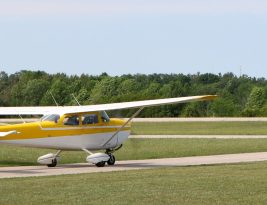Today on the Learn to Fly Blog, we’d like to share some information on ASA’s next generation CX-3 Flight Computer, available this November. The CX-3 is an excellent companion in the cockpit, on the tarmac, or the ground school classroom, whether you need to make
…Blog Posts
Today, I would like to recap Monday’s post on the aircraft engine cooling system and go over some typical questions you will likely see on your FAA Private Pilot knowledge test. First off, we learned about the effects of operating with an excessively high aircraft engine
…Today’s post is excerpted from Pilot’s Handbook of Aeronautical Knowledge.
The burning fuel within the cylinders produces intense heat, most of which is expelled through the exhaust system. Much of the remaining heat, however, must be removed, or at least dissipated, to prevent the engine from
…Today, we’re featuring an excerpt from The Pilot’s Manual: Instrument Flying. In A Pilot’s Accident Review, author John Lowery recommends that “after about 100 hours of flying with a new private certificate it’s important to the new pilot’s safety and longevity to
…The FAA October test cycle resulted in very few changes or updates to the FAA Airman Knowledge Tests. The FAA Aviation Exam Board continues to work to align questions within the context of a specific Area of Operation/Task as outlined in the various Airman Certification Standards publications. The goal of
…Today’s post is an excerpt from the Pilot’s Handbook of Aeronautical Knowledge (8083-25).
Atmospheric pressure historically was measured in inches of mercury (“Hg) by a mercurial barometer. The barometer measures the height of a column of mercury inside a glass tube. A section of the mercury
…Eyes provide the brain with a visual image of the environment. Each eye acts as a natural and very sophisticated digital camera. Its basic function is to collect light rays reflected from an object, using the lens to focus these rays into an image on a screen (the retina), and
…

